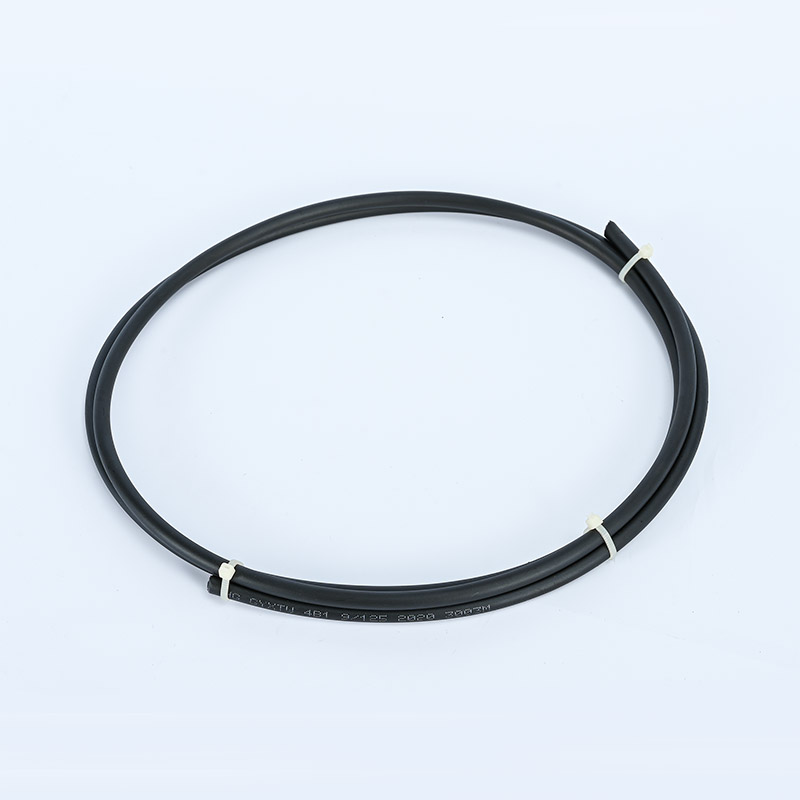Notes on Using RF Cable Assemblies (2)
2022-02-26
Notes on Using RF Cable Assemblies (2)
5. When using right-angle elbow connectors for components, do not twist the cables and components to match other connectors. Due to the structural design of right-angle elbows, the connection angle between the connector and the cable has been limited and fixed. If the component is twisted or turned during use, additional force will inevitably be exerted on the soldering position of the connector and the cable, which will lead to electrical deterioration and eventual damage of the component in the long term.
6. When passing the cable through the frame or narrow area, do not stretch it with the connector, otherwise it will cause mechanical stress damage where the connector is welded to the cable. It should be laid in sections and installed as short as possible so that there is less stress on the cable assembly. Components cannot be left in the air to bear their full weight. If necessary, they should be segmented equidistantly and supported by cable racks.
7. Cable assemblies with a length of less than 30cm must be carefully bent. Components up to 30cm in length can be stiff, depending on the type of cable. The cable becomes stiff because the ratio of the cable length to the outer diameter is small, and the inner and outer conductors are connected (say, soldered) to the connector, which minimizes the bending characteristics of the assembly. At this time, it is difficult to obtain the minimum bending radius on the premise of ensuring that the components are not damaged. Therefore, short-segment assemblies are only suitable for slight bends. If there are sharp bends or large bends, long-segment assemblies must be used.
8. ESD protection
In order to protect components and test equipment, testers should always wear relevant electrostatic protection devices such as hand straps that can effectively discharge electrostatic discharge when connecting test devices. Before connecting to the test port of the instrument and other electrostatic-sensitive devices, ensure The inner conductor of the cable assembly is grounded for effective electrostatic discharge.
9. Phase Matching Cable Assembly Testing Considerations
The testing of phase-matched cable assemblies shall be the same (connector, length) assembly, under the same ambient temperature and the same test conditions, at the specified frequency point to test the phase difference of the batch of assemblies. The ambient temperature change during the test process is not greater than ±2°C. The components should be placed in the test temperature environment for 1 hour before the measurement. A vector network analyzer with sufficient accuracy is used to measure, and the test value of one of the components is designated as the benchmark. Comparing other components to this benchmark, the test process should keep the components the same shape and the same fixed position.

5. When using right-angle elbow connectors for components, do not twist the cables and components to match other connectors. Due to the structural design of right-angle elbows, the connection angle between the connector and the cable has been limited and fixed. If the component is twisted or turned during use, additional force will inevitably be exerted on the soldering position of the connector and the cable, which will lead to electrical deterioration and eventual damage of the component in the long term.
6. When passing the cable through the frame or narrow area, do not stretch it with the connector, otherwise it will cause mechanical stress damage where the connector is welded to the cable. It should be laid in sections and installed as short as possible so that there is less stress on the cable assembly. Components cannot be left in the air to bear their full weight. If necessary, they should be segmented equidistantly and supported by cable racks.
7. Cable assemblies with a length of less than 30cm must be carefully bent. Components up to 30cm in length can be stiff, depending on the type of cable. The cable becomes stiff because the ratio of the cable length to the outer diameter is small, and the inner and outer conductors are connected (say, soldered) to the connector, which minimizes the bending characteristics of the assembly. At this time, it is difficult to obtain the minimum bending radius on the premise of ensuring that the components are not damaged. Therefore, short-segment assemblies are only suitable for slight bends. If there are sharp bends or large bends, long-segment assemblies must be used.
8. ESD protection
In order to protect components and test equipment, testers should always wear relevant electrostatic protection devices such as hand straps that can effectively discharge electrostatic discharge when connecting test devices. Before connecting to the test port of the instrument and other electrostatic-sensitive devices, ensure The inner conductor of the cable assembly is grounded for effective electrostatic discharge.
9. Phase Matching Cable Assembly Testing Considerations
The testing of phase-matched cable assemblies shall be the same (connector, length) assembly, under the same ambient temperature and the same test conditions, at the specified frequency point to test the phase difference of the batch of assemblies. The ambient temperature change during the test process is not greater than ±2°C. The components should be placed in the test temperature environment for 1 hour before the measurement. A vector network analyzer with sufficient accuracy is used to measure, and the test value of one of the components is designated as the benchmark. Comparing other components to this benchmark, the test process should keep the components the same shape and the same fixed position.



